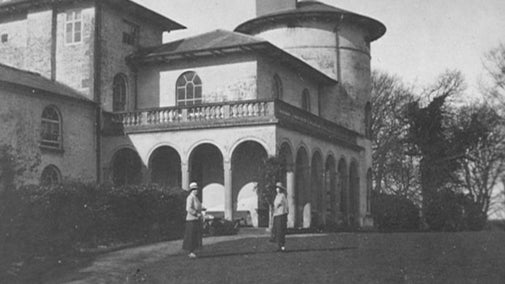
Discover more at Attingham
Find out when Attingham Park is open, how to get here, the things to see and do and more.

Attingham’s Town Walls Tower has royal roots, being commissioned by King Henry III. Built in the 14th century to provide protection against Wales, delve into the history of the tower. Town Walls Tower is open on selected dates by pre-booked guided tour, or stay in Town Walls Tower for a short break.
Town Walls Tower is evidence of Shrewsbury's history as a strategically-important settlement, close to the border with Wales.
It formed a key part of the defensive walls that once surrounded the town and is now the last surviving example of those defences.
The building of Shrewsbury’s perimeter walls is dated to 1220 and 1242. Henry III issued a royal mandate urging the men of Salop (Shropshire) to fortify the town, and grants for building walls were made during his reign.
The King visited Shrewsbury on several occasions, pursuing his campaign against the Welsh. By the 14th century, the walls had fallen derelict and Henry IV commissioned further rebuilding.
Town Walls Tower was probably added during this time, when the town was at risk from attack.
A map of 1575 shows the town almost fully encircled by walls featuring several similar towers. They were a means to observe land around the town and river.
Once it ceased to have a defensive purpose, Town Walls Tower was leased out to local townsmen. Little is known about the use of the Tower in the 17th and 18th centuries.
The first reference to Shrewsbury is in a Charter of Wenlock Abbey, dated 901. It refers to Scrobbesbyrig.
By 1086, the town consisted of 252 houses - with the castle and River Severn providing adequate defence.
Town Walls Tower is now holiday accommodation and is open for pre-booked tours on selected dates throughout the year.

Find out when Attingham Park is open, how to get here, the things to see and do and more.

This last remaining 14th-century watchtower sits on what were once the medieval defensive walls of Shrewsbury. Delve into the history of the tower via a pre-booked, timed tours on selected days throughout 2025.

From ancient landscapes to mansion restoration, discover the rich history of the Attingham Estate.

Discover the history of Cronkhill on the Attingham Estate. From a generous gesture for a friend to a family bolt hole, take a look at the changing purpose of this Italianate Villa.

Learn about people from the past, discover remarkable works of art and brush up on your knowledge of architecture and gardens.